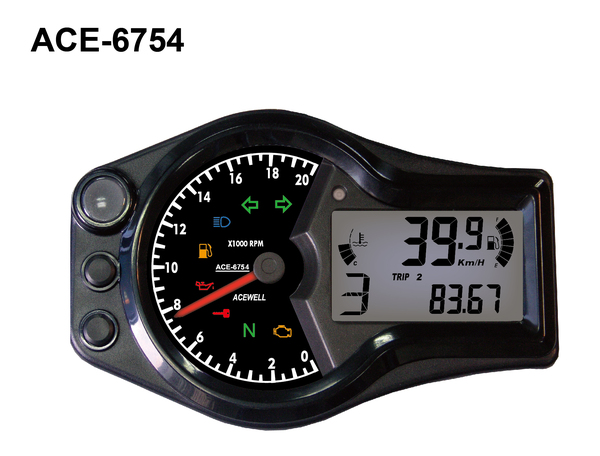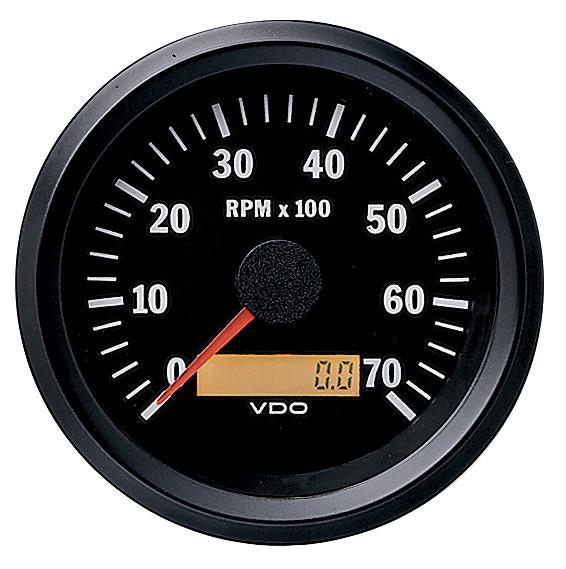Tachometer Fundamentals: Everything You Required to Know for Accurate Readings
Tachometer Fundamentals: Everything You Required to Know for Accurate Readings
Blog Article
The Significance of a Tachometer in Checking Engine Rate and Efficiency in Automotive Applications
In the world of vehicle engineering, the tachometer stands as an essential tool in the chauffeur's arsenal, providing a straight window into the inner operations of a vehicle's engine. Beyond its function as a plain gauge of transformations per minute (RPM), the tachometer functions as an essential device for lovers and professionals alike, providing real-time insights right into engine efficiency and health and wellness. Recognizing the significance of this device exceeds surface-level monitorings, diving into the elaborate relationship between engine speed, power outcome, and total driving experience. As we explore the complex duty of the tachometer in automobile applications, a deeper recognition for its influence on lorry dynamics and efficiency begins to emerge.
Importance of Monitoring Engine RPM
Keeping an eye on engine RPM, or changes per minute, is a crucial facet of vehicle maintenance and efficiency examination. Engine RPM directly associates with the speed at which the engine's crankshaft rotates, indicating just how rapidly the engine is running - tachometer. By monitoring RPM, auto mechanics can examine the health of the engine, identify prospective problems, and fine-tune performance. An uncommon RPM analysis might signify issues such as engine misfires, faulty ignition system, or problems with the gas distribution system. Consistently high RPM readings can show hostile driving behaviors or the requirement for a greater gear shift to boost gas performance.
In addition, monitoring engine RPM is essential for performance analysis in racing and high-performance lorries. Preserving optimum RPM degrees is essential for achieving peak power result and acceleration. Racers frequently utilize tachometers to ensure they are operating within the excellent RPM array for maximum efficiency. In recap, keeping track of engine RPM is not just crucial for finding concerns however also for enhancing engine efficiency in various automobile applications.

Benefits of Real-Time Data
In auto applications, real-time data plays a vital function in supplying immediate understandings right into the efficiency and problem of the lorry. By continuously keeping track of various specifications such as engine speed, temperature level, gas consumption, and a lot more, real-time information provides many advantages that add to enhanced performance and safety and security when traveling.
Furthermore, real-time data promotes efficiency optimization by providing prompt responses on driving practices and engine important site performance. Vehicle drivers can readjust their behavior in real-time based on this information to attain far better fuel economy and prolong the life-span of their car.

Additionally, real-time data plays internet an essential duty in contemporary automotive diagnostics, enabling specialists to swiftly identify and resolve breakdowns. This leads to decreased downtime, lower maintenance costs, and inevitably, boosted overall vehicle integrity and durability (tachometer). By using the power of real-time information, automobile stakeholders can make informed choices that positively impact both the efficiency and long life of the automobile
Effect On Gear Shifts
The tachometer plays an important function in enhancing equipment changes by giving real-time engine rate data to the chauffeur. When approaching the redline on the tachometer, it signals the motorist to upshift to avoid over-revving the engine and causing possible damage.
Furthermore, the tachometer aids in achieving smoother gear changes, especially in manual transmissions. By keeping track of engine speed, chauffeurs can execute equipment shifts at the ideal RPM array, minimizing snagging motions and reducing wear on the transmission parts. This accuracy on duty changes not just enhances driving comfort however also adds to fuel efficiency.
Enhancing Gas Effectiveness
Given the important function the tachometer plays in maximizing gear changes for efficiency and engine health and wellness, it straight adds to taking full advantage of gas efficiency in auto applications. By providing real-time responses on engine rate, the tachometer assists chauffeurs in maintaining the most effective RPM go to my site range for gas economic situation. When chauffeurs continually check the tachometer and adjust their driving habits as necessary, they can prevent unnecessary fuel consumption caused by over-revving or carrying the engine.
Moreover, the tachometer helps motorists determine the most fuel-efficient gear to be in at any kind of given minute, avoiding the engine from functioning tougher than needed. This is specifically critical during velocity and cruising, where remaining in the right equipment can substantially impact gas effectiveness. Additionally, the tachometer can inform motorists to prospective mechanical concerns that might be adversely impacting fuel economic climate, such as a slipping clutch or a clogged up air filter. Finally, the tachometer works as a valuable device in boosting gas effectiveness by advertising ideal driving habits and identifying areas for enhancement in the lorry's performance.

Taking Full Advantage Of Engine Longevity
The tachometer's duty in checking engine speed and efficiency is crucial in making sure the longevity of automotive engines. Keeping an eye on the tachometer permits drivers to stay within the advised RPM variety for their automobile, preventing unneeded strain on the engine and extending its life expectancy.

Final Thought
To conclude, the tachometer plays a critical function in checking engine speed and performance in automotive applications. By giving real-time information on RPM, it permits for efficient gear shifts, improved gas efficiency, and taken full advantage of engine long life. This device is crucial for preserving optimal engine efficiency and making sure the overall performance of a lorry.
Report this page